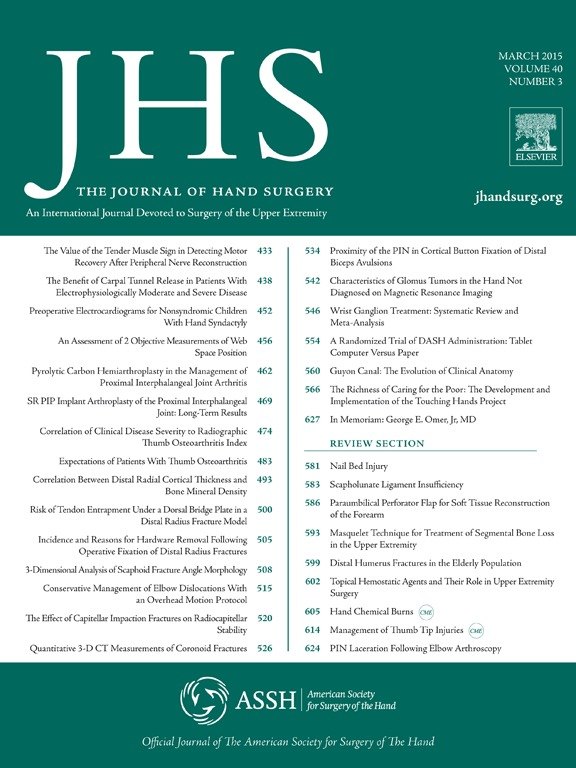
Surgical treatment of scaphoid waist fractures associated with high risk of complications .
This report has been verified
by one or more authors of the
original publication.
Surgical versus nonsurgical treatment of acute minimally displaced and undisplaced scaphoid waist fractures: pairwise and network meta-analyses of randomized controlled trials
J Hand Surg Am. 2011 Nov;36(11):1759-1768.e1. doi: 10.1016/j.jhsa.2011.08.0336 studies (363 patients) examining outcomes of surgical and nonsurgical treatments of undisplaced or minimally displaced scaphoid waist fractures were evaluated through pairwise meta-analysis. An additional 3 trials were also identified for inclusion in a network meta-analysis. Following assessments of fracture union, complications, range of motion, grip strength, and osteoarthritis between patients who underwent either surgical or non-surgical treatment, there was a non-significant trend to increased union with surgical treatment. However this method of treatment was also associated with a higher risk of complications.
Unlock the Full ACE Report
You have access to 4 more FREE articles this month.
Click below to unlock and view this ACE Reports
Unlock Now
Critical appraisals of the latest, high-impact randomized controlled trials and systematic reviews in orthopaedics
Access to OrthoEvidence podcast content, including collaborations with the Journal of Bone and Joint Surgery, interviews with internationally recognized surgeons, and roundtable discussions on orthopaedic news and topics
Subscription to The Pulse, a twice-weekly evidence-based newsletter designed to help you make better clinical decisions
Exclusive access to original content articles, including in-house systematic reviews, and articles on health research methods and hot orthopaedic topics

































































